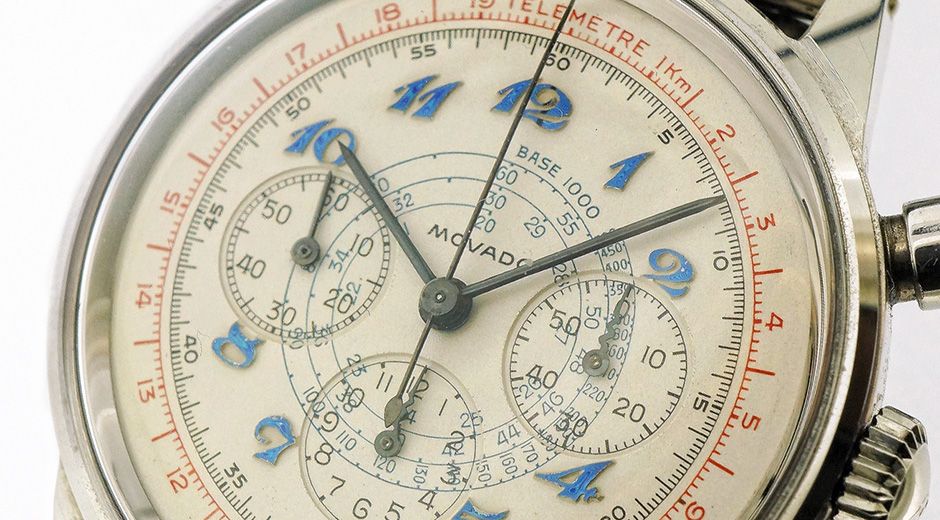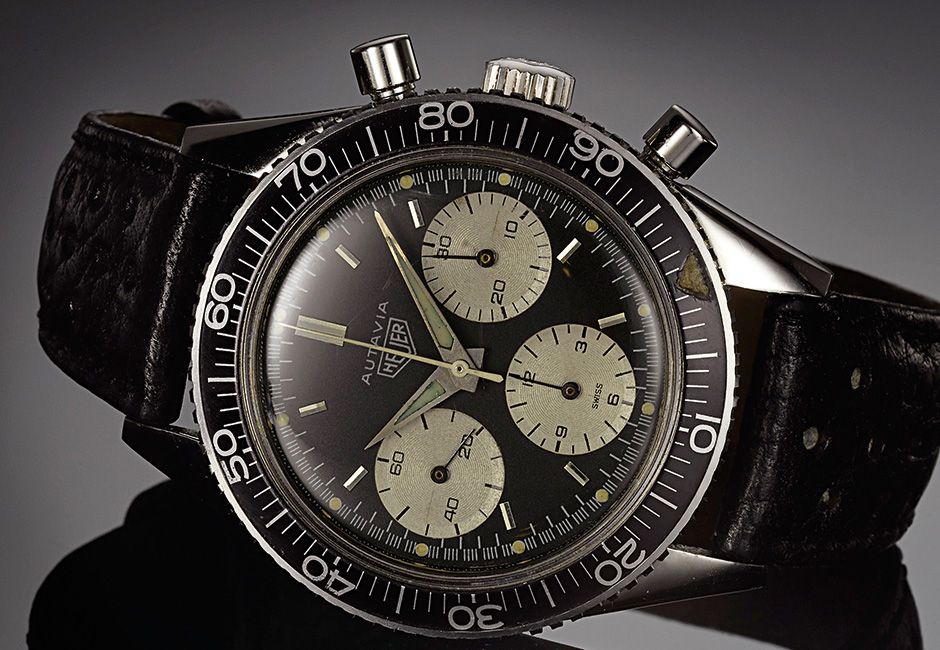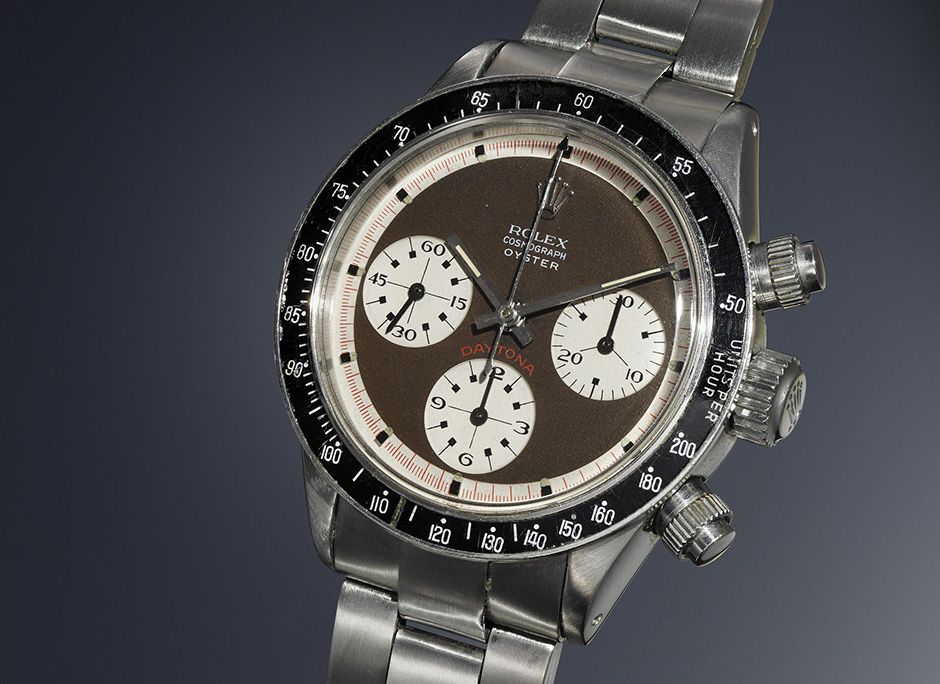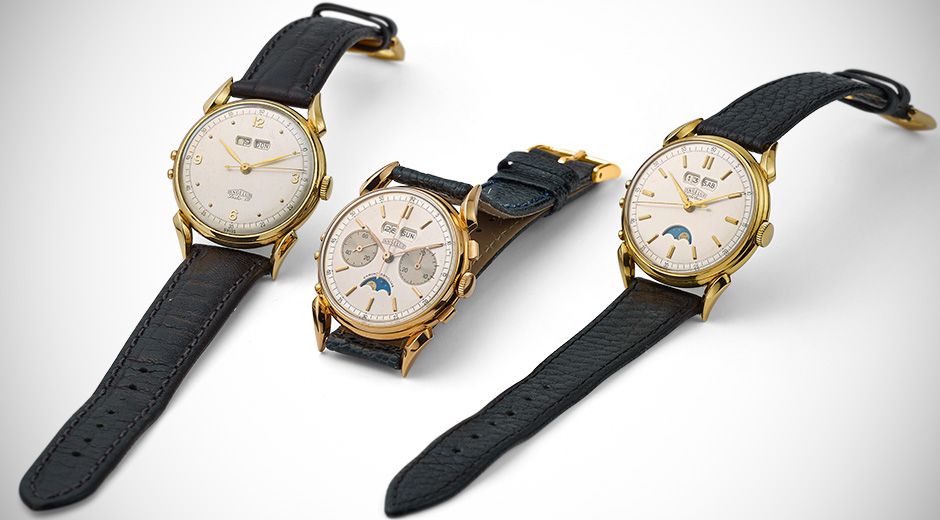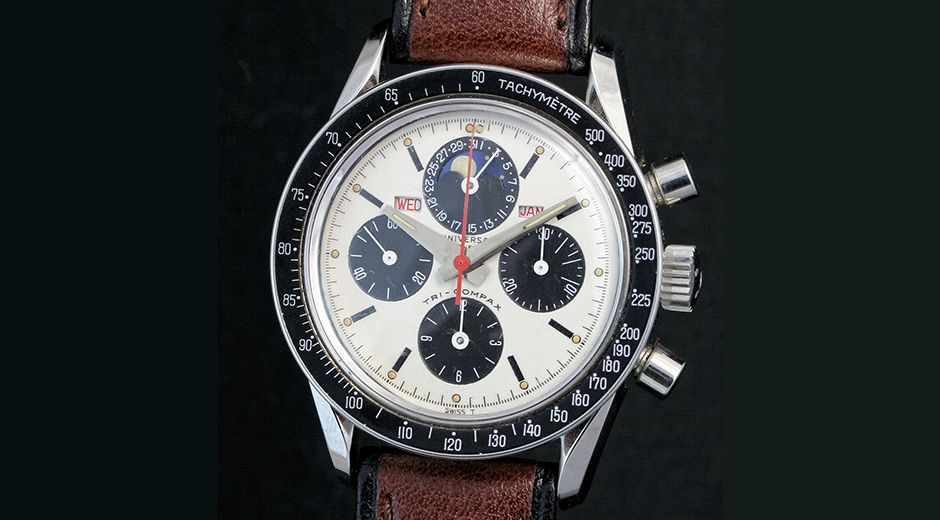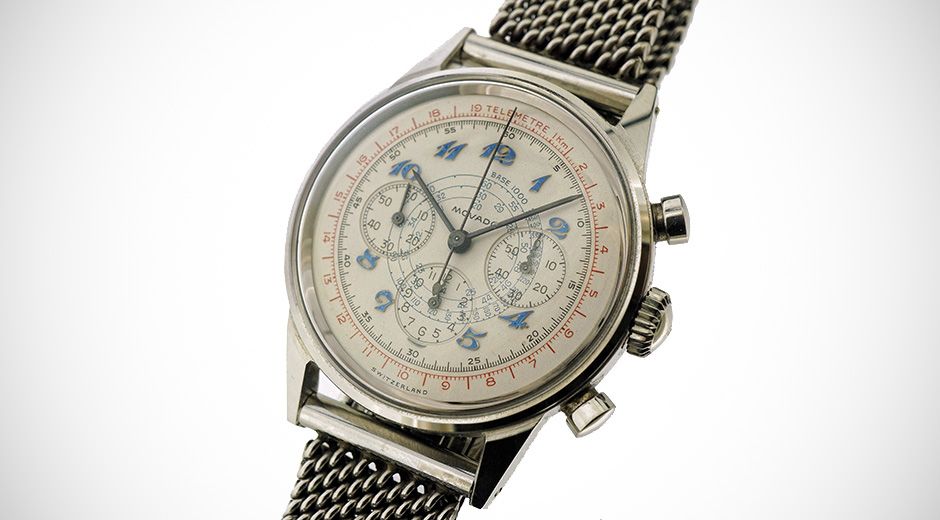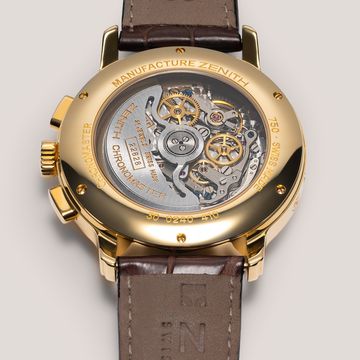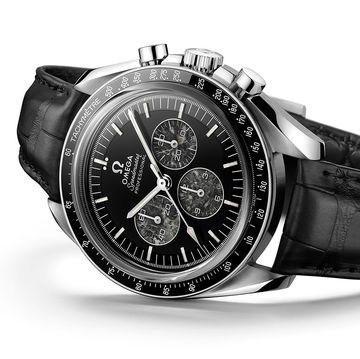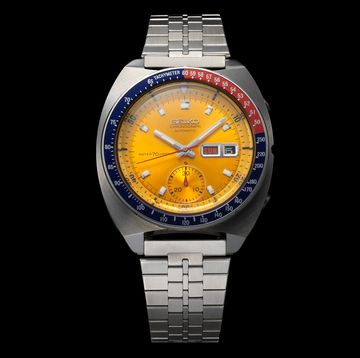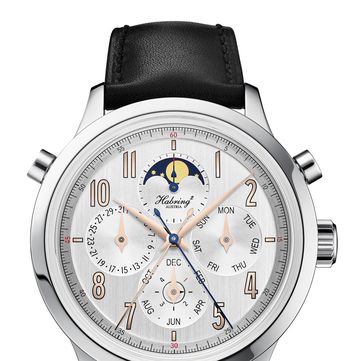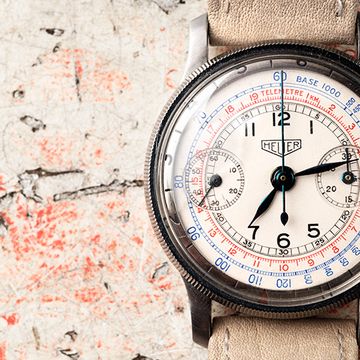Exemplified by the Phillips Stop/Start/Reset sale of 88 stainless steel chronographs on May 14, vintage chronographs are on an enormous hot streak right now. Here to share their thoughts on why that is, as well as which watches are rising fast and which might still be a good value purchase, is our panel of experts:
Paul Maudsley, Phillips
Michael Stockton, Fratello Watches
Alex Barter, Consultant to Sotheby's Watch Department and owner of Black Bough
Simon Sutton, Watches of Knightsbridge
Jeff Stein, founder of OnTheDash. Vintage Heuer expert and collector
QP: The market for 1960s sports chronographs has exploded in recent years. Why?
Simon Sutton: All these watches were so underpriced for so many years. Part of it come down to the fact that a lot of the brands aren’t around today. But all of a sudden people are realising that these watches are fantastic and they should be valued. A lot of collectors have got all the Rolexes. Now they’re looking for something else – cheaper, good quality vintage watches.
Michael Stockton: There are those of us out there who don’t look at 1960’s sports chronos as just the flavour of the month. Many of us have wondered why it’s taken so long for the rest of the collecting world to notice how relevant (and still comparably affordable versus new watches) these pieces are today.
It’s difficult to attribute the current fervour to any one thing, so perhaps it’s just a “perfect storm” of circumstances. There’s clearly an interest in most things vintage, along with handcrafted “authentic” goods. Secondly, I think that our overreliance on electronics has us secretly pining for the simple things. Mechanical watches are a practical, daily method of staying in touch with something simpler. Why chronographs? Well, there’s nothing wrong with a normal 3-hand watch but they tend to be dressier (we’re simply not on the set of “Mad Men” today) and more anonymous. The chronograph adds distinction and, whether we use it or not, an air of functionality. I also think that the auction houses have realized that people want to see more than Rolex and Patek.
Paul Maudsley: Even before we announced that we were going to do a dedicated chronograph sale, the collectors market is really really hot. The Rolex market has reached a price point where the entry level collectors can’t get on board for something really good, so the chronograph market is exploding.
Our sale will be a benchmark for prices, like in 2010 when the Haslinger sale set the benchmark for Heuers. In the Haslinger sale we had a first execution Autavia for £3,000-5,000k. That’s a £45,000 watch now (below). It creates an understanding – people start specialising, and it all gets that much more interesting.
Jeff Stein: We are in the middle of a chronograph gold rush. If a really good sample of a desirable watch (or even a good collection of watches) comes onto the market, it will attract a crowd of prospective purchasers. The supply has really dried up; a lot of great watches have been “put away”, so people are rushing to whatever comes onto the market.
Vintage Heuers are my primary reference point for changes in the market. The real break-out has been in the “best of the best” pieces. There is a lot of money in the world right now - whether in Silicon Valley or Wall Street - and people talk about investing in “alternative” assets (for example, art, cars, watches and other collectibles). Collectors allocating significant money to vintage watches want the very best pieces; someone seeking to invest $100,000 prefers two $50,000 watches, rather than ten $10,000 watches.
QP: What is so special about the 1960s? Why are we not seeing the same boom in chronographs from the 1940s/50s or 1970s?
Michael Stockton: So many objects from the 1960s still resonate today because the era was really a turning point for design. Whereas the 50s still showed evidence of a post-war hangover (look at often-bloated car design for example) and the 1970’s was too post-modern and faddish, the 1960’s just got it right. The chronographs from the 1960’s usher in clean design with sporty, contrasting dials that are reminiscent of the gauges found in so many of the sports cars of the day.
Movement-wise, most of the movements I love don’t originate from the 1960’s but they certainly hit their stride during this period. Manual wind, column-wheeled standards such as the Valjoux 72, Lemania 321, and Venus 178 were found inside the most seminal 3-register pieces such as the Heuers, Daytonas, Speedmasters and Navitimers.
If we look at the 1940’s - 50’s, there are some real gems from Breitling, Benrus, Universal Geneve, Angelus, Omega, and others. The concerns about this period are many though. Case sizes are often, but not always, small (35mm and below). The movements are often very finicky (combining all sorts of whizz-bang complications that may not have even worked well 50-60 years ago), difficult to service and normally contain no shock protection whatsoever. These watches are older which generally means they’ve seen more action and often show it. Finally, the dials just look more archaic, are often printed, and often are re-dialed to repair water damage or aging. Some of these issues show up on 1960’s chronographs, but I find them more typical on these earlier watches.
The 1970’s was the “automatic” period - a necessary update from the industry that helped it battle the automatic and quartz onslaught from Japan. However, I always say that there’s simply something missing in an automatic. They lack the purity of a manual chronograph, are often thicker and if worn daily, don’t really require any involvement from the owner. Perhaps I’m too curmudgeonly with this opinion, but I think the general market agrees at this stage. Manual chronographs are of course available from this period, but in almost all cases, the movements have been “economised” and the glorious, delicate, column-wheeled engines were replaced with more robust, cheaper, cam-lever units.
Jeff Stein: There currently seems to be a nostalgia for well-built objects from the mid century; people enjoy the racing imagery, and the romance of the great racers. Whether it’s Jim Clark, Paul Newman, Steve McQueen, Mario Andretti, Jochen Rindt or Jo Siffert, people enjoy objects associated with these heroes. Heuer, with the Autavia and Carrera, had not only great designs but this genuine connection to the golden era of motorsports. Many brands have tried to create or purchase this imagery, but Heuer actually had it, back in the day.
The older ones (say, from the 1940s and 1950s) have been laggards, to some extent because they are not widely known and also because they did not have strong model names! It’s much easier to get excited about an Autavia, Carrera, Daytona, Speedmaster or Navitimer, than a reference 2447 or 2444. Also, the designs and construction seemed to improve in the 1960s.
QP: Can you give some examples of what you've seen happening to prices?
Simon Sutton: These watches have jumped up within six months by thousands of pounds. Pre-‘50s the chronographs haven’t gone up. But everyone’s looking for 60s and 70s chronographs. Heuer Carreras and Camaros, Enicar, Angelus. Anything with a good Valjoux movement. We’re talking about pieces that are in fantastic condition – that’s when the prices are fetching the big money.
Jeff Stein: I haven’t tracked the increase in prices over time in any detail at all, but we’ve seen bellwether sales, with prices breaking into the next level, and then we see additional sales at the new level. For many vintage watches, over the last couple of years, there has never been a reversal or correction, or the market even taking a breather.
Paul Maudsley: I was selling Universal Geneve Compaxes and Aerocompaxes for £800 - £1,200 not that long ago; now they’re tens of thousands. It’s people’s perception of these items that’s changing, not very difference to a house.
People say it’s supply and demand – but Rolex made a lot of Daytonas. It’s all to do with perception. The ultimate chrono that I don’t own is a Longines with “mushroom” pushers; not long ago one was offered to me for £3,000 - £5,000 – incredible to think. You see the prices of them now, they’re €70,000.
QP: Which brands in particular are really taking off? Are people going after brands or movements more?
Jeff Stein: I believe that we are seeing a rotation into the next brands, from Rolex to Heuer, and on into others. Smart chronograph enthusiasts are pursuing brands like Angelus, Gallet and Zenith.
We have seen very strong moves from Universal and Enicar (and some other well-known brands), but I am not sure that they can follow the trajectory of the Heuers. I’m also not so sure about Minerva; supply seems very limited.
It’s fair to say that the Valjoux 72 has become a market category in its own right. There are hundreds of brands and models that used it and that seems to be a real selling point, even if the design / style / build of the rest of the chronograph is not up to the Daytona / Autavia / Navitimer standards. But even the ugly watches from lesser known brands seem to be rising!
Simon Sutton: Lemania, especially the military ones, they’re really flying at the moment. Breitling Top-Times were really slow for a time, and they’re doing really well now.
Alex Barter: Universal Geneve is really starting to move up in price. In the last few years, some have really stood out, like the oversized split second Cairelli, which now goes for huge sums now. But even the more common ones, in the last five years they’re becoming much more difficult to find.
When I started at Sotheby’s we’d have AeroCompaxes and Tri Compaxes quite regularly. Now they seem to be rarer than they really are.
QP: Where is there still value to be found?
Paul Maudsley: It doesn’t need to be a famous name, necessarily. Gallet as a chronograph maker is up there with some of the best chronographs out there. They had fantastic cases, beautifully engineered pieces.
Zenith is well known as a watch brand. But people forget that they made fantastic pre-El Primero chronographs. Early Breitling chronographs – everyone associates it with the Navitimer. But even a 1960s 806 Navitimer will still only fetch £3,000-£4,000 euros. Who else? Record – they made some fantastic watches. Mainly complication watches, triple calendars and moon phase.
Simon Sutton: Movado – because its new branding is so poor. It was a big name 30 years ago, one of the biggest. The chronograph they made was a fantastic one. But you never really hear of them.
If you look at a Movado chronograph movement you can see what people mean, and the watch was fantastic quality. They’re not in the range of Heuer, Breitling, or even Enicar – but you rarely see them. Or if you do, they’ve got restored dials.
Alex Barter: A very good entry-level chronograph is those by Chronographe Suisse, from the late 1940s through to 1950s. There are buckets of those around, but they’re very nice watches with Venus movements. They’re normally in gold, thin gold cases, but they made them with a whole variety of different dials, including very interesting colourful scales. You can normally pick up a good one at auction for £300-£400, in 18ct gold.
QP: One watch in particular seems to exemplify this booming market - the Heuer Autavia. Why is that, and what does it mean for vintage Heuer overall?
Michael Stockton: It’s funny, when I started looking for a 1960’s Autavia a year ago (a Rindt model similar to the one that just won the TAG competition), some friends thought $3500 - $4000 was a relatively good price. I found one within a month and paid substantially more, but another sold two months later for double what I paid. So, yes, Autavia values have risen meteorically. I think that people have realized that these were the real track models worn by racers from the period that’s often considered as the golden age of the sport. Autavias were very rugged for their day; they were waterproof, far thicker than their Carrera counterparts and contained a usable rotating bezel. Oh, and the dials (and movements) are almost identical to the Rolex Daytonas of the time. The 1960’s Autavias are a hell of a lot rarer than most Daytonas of the period and they wear wonderfully. Has the Autavia overtaken the Carrera? It’s quite possible.
Jeff Stein: People being out-bid on $80,000 Daytonas (or fatigued with the increase in prices) looked at the $5,000 to $10,000 Autavias or Carreras and wondered why they were so cheap. Same quality build; same movements; same company producing the dials; very similar look and style, etc. So there is rotation into Heuer. Over the last couple of years, I have received a lot of email messages that begin with statements to the effect of: “I have been collecting sport Rolex watches for many years, and am now trying to find a couple of Heuer chronographs.”
QP: What has the impact been of social media on the chronograph collecting scene?
Michael Stockton: Social media, especially Instagram and Facebook groups, are a real enabler. They’ve supercharged the hobby while allowing for near-instantaneous advice or transactions – I’m fairly well addicted and it certainly hasn’t helped my wallet!
Paul Maudsley: I think some of this boom is the cumulative effect of social media. You look at Instagram; everyone is putting pictures of chronographs in there. My feed is completely full of chronographs now.
The more people talk about something, the more history is delved into, and the more awareness there is. It’s great for collectors, particularly if you’ve built up a collection of chronographs.
Jeff Stein: Social media supports the market and the community of collectors, and greatly enhances the collecting experience, but I doubt that Facebook and Instagram bring new people into the market. There have always been very strong communities of passionate collectors; this fuels the market. It started with eBay and discussion forums, now we have Instagram and Facebook groups; these are just different channels that enhance the experience of collecting.
Social media does offer the collector a “show and tell” experience. They open the package to receive the new watch, and can’t wait to share it on FB or IG. So perhaps someone “pushes the button” on eBay or a dealer site just in order to have a great watch to post, but I view this as secondary.
